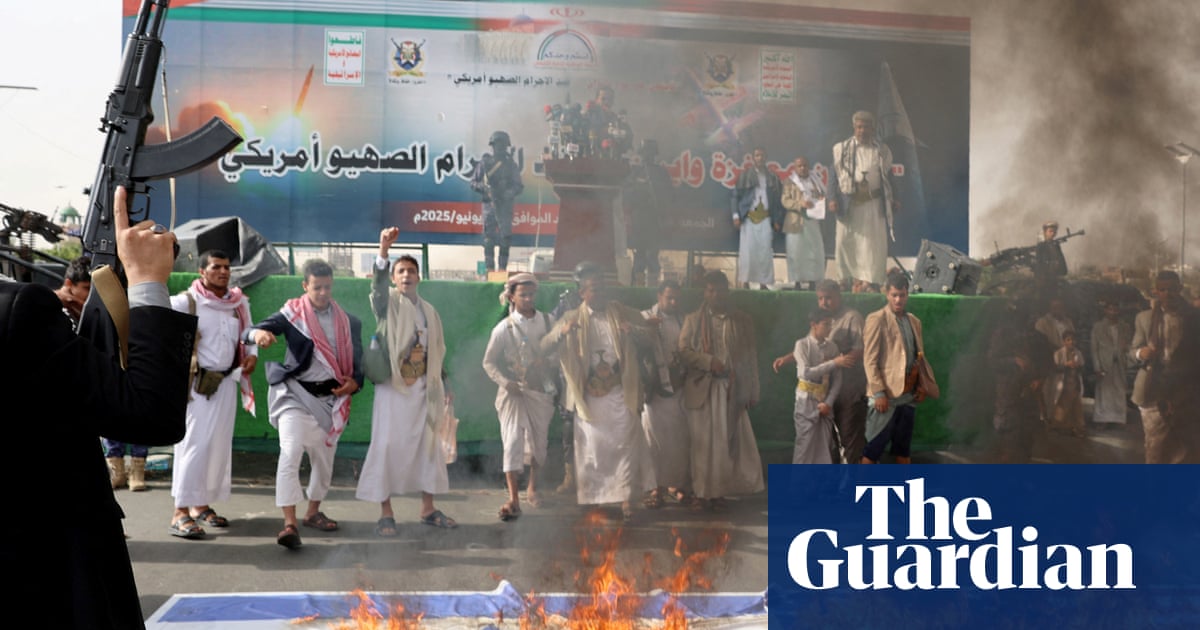Iran’s proxy militias across the Middle East have yet to retaliate for the overnight strikes against the Islamic Republic and are sending mixed signals about their willingness to strike US targets – or evenIsrael– in the coming days.
The apparent reluctance or inability of such groups to come to Iran’s aid will limit Tehran’s options if decision-makers there opt to escalate the conflict with the US.
Iran’s Revolutionary Guards warned the US on Sunday in a statement carried by state TV to “expect regrettable responses” to its strikes on the country’s nuclear sites.
Iran, it said, would “use options beyond the understanding … of the aggressor front” and would continue to target Israel, which has been hit by multiple waves of missile and drone attacks since it struck Iran on 13 June.
On Friday, a new wave of Iranian missiles launched in a first response to the US strikes hit sites in central Israel, injuring at least 10 people, according to Israeli rescue services.
The strongest statement in support of Tehran from the militant groups that make up its coalition of proxies across the Middle East – the so-called “axis of resistance” – has come from the political bureau of the Houthi movement inYemen.
The Iran-backed group called on Muslim countries to join “the jihad and resistance option as one front against the Zionist-American arrogance”, saying it was ready to target US ships and warships in the Red Sea.
The Houthis have already fought American forces in recent months, after the US president, Donald Trump, launched an air offensive against the group following months of attacks on shipping in the Red Sea and against Israel. A ceasefire was agreed in May.
“The Houthis still retain enough capability to do what they like doing. If they want to hit US vessels in the Red Sea, they still have that capability. They are a wild card and the Iranians don’t spend a lot of time trying to restrain them,” said Michael Knights, an expert in Iranian proxies at the Washington Institute for Near East Policy.
There is, however, little evidence that Iran-aligned and supported groups inIraq, which have struck US targets in the past, were planning imminent action.
Such groups could do considerable damage to US bases in Iraq,Syria, Kuwait and Jordan if mobilised, and have been attacked by the US in the past but are likely to be deterred by the potentially high cost of launching new strikes against US targets.
“They could do some damage but the US understand these targets and would find them pretty fast,” said Knights.
One Tehran-backed Shia militia in Iraq, Kata’ibHezbollah, threatened to attack “US interests” in the Middle East in response to a military intervention by Washington. One of its commanders, Abu Ali al-Askari, was quoted on CNN as saying that US bases in the region would “become akin to duck-hunting grounds”.
However, the group suffered heavy losses in US airstrikes afterkilling three US soldiers at a base in Jordanlast year and may not follow through on its rhetoric.
Hezbollah, the powerful Islamist militant militia based in Lebanon that has long been supported by Tehran, has made no official statement, with its officialsbriefing journalistsin the region that it would stay out of any new clash between Iran and the US.
Hezbollah, the keystone of Iran’s axis of resistance, was very significantly weakened by Israel’s air offensive and ground invasion of Lebanon last year. Its entire leadership was killed and large stocks of missiles, intended to deter Israel from attacking Iran’s nuclear programme, were destroyed.
Hamas, another member of the coalition of militant groups built up by Tehran over recent decades, is in no position at present to threaten the US or Israel, analysts said.
Links between the proxies and Tehran have been further weakened in the last week after assassinations conducted by Israel.
Several senior officials in the Revolutionary Guards killed in airstrikes were involved in running the coalition of militant groups, including Behnam Shahriyari, who Israeli military officials said was in charge of equipping proxy forces with weapons including ballistic missiles.
Shahriyariwas killedwhile driving in western Iran on Friday, Israel’s military said.
The US has about 20 bases in the Middle East and tens of thousands of troops. It also has an extensive diplomatic presence, which could be targeted.
The US defence secretary, Pete Hegseth, said military generals had elevated protection measures across the region, especially in Iraq, Syria, and the Gulf.
“Our forces remain on high alert and are fully postured to respond to any Iranian retaliation or proxy attacks, which would be an incredibly poor choice,” Hegseth told reporters at a press conference on Sunday.
Underlining the threat, a Middle East-based maritime centre overseen by the US. military warned on Sunday that there was a “high” risk to US-associated ships after the American strikes.“The threat to US-associated commercial shipping in the Red Sea and Gulf of Aden is currently assessed as HIGH,” the Joint Maritime Information Center wrote in an advisory to shippers.
Other means of retaliation available to Tehran may take longer to mobilise. In previous decades, Iran has used massive bomb attacks against US troops in Lebanon or against Jewish and Israeli targets as far away as Argentina.
Last week, theFBI intensifiedinvestigation and monitoring of “sleeper cells” linked to Hezbollah in the US.
